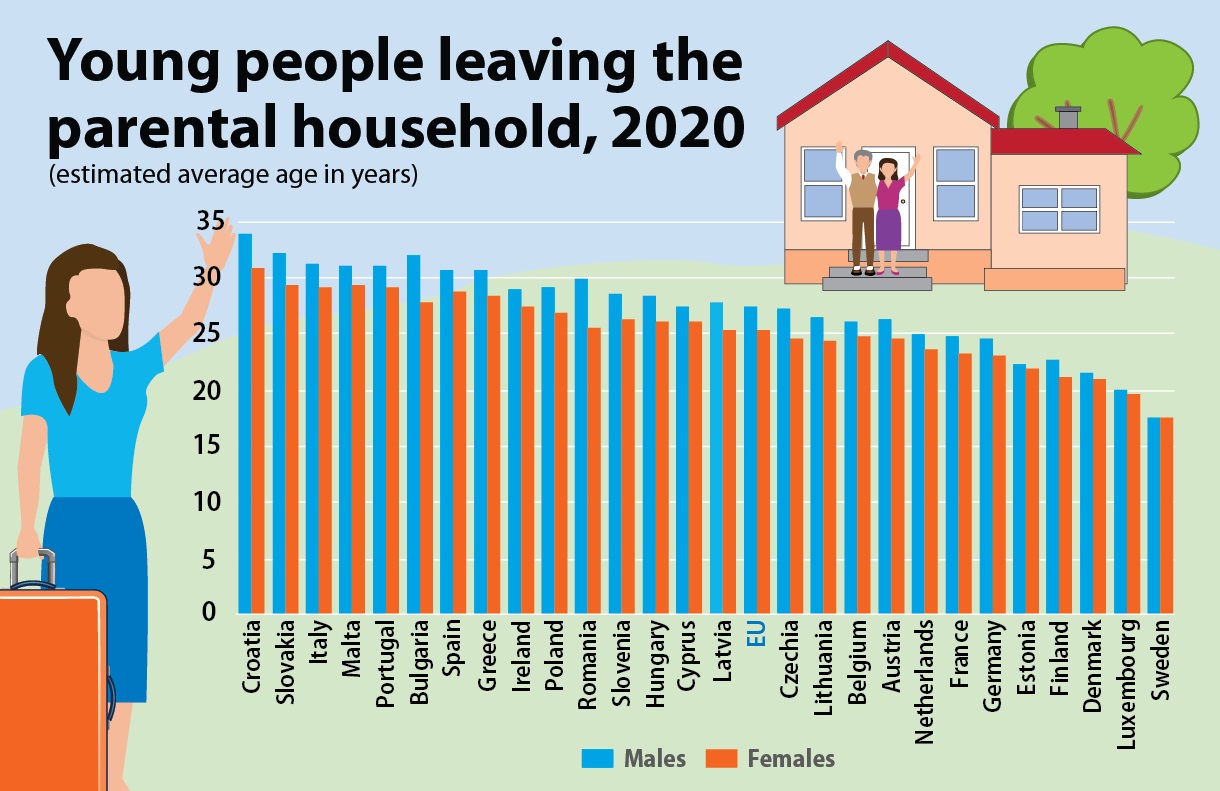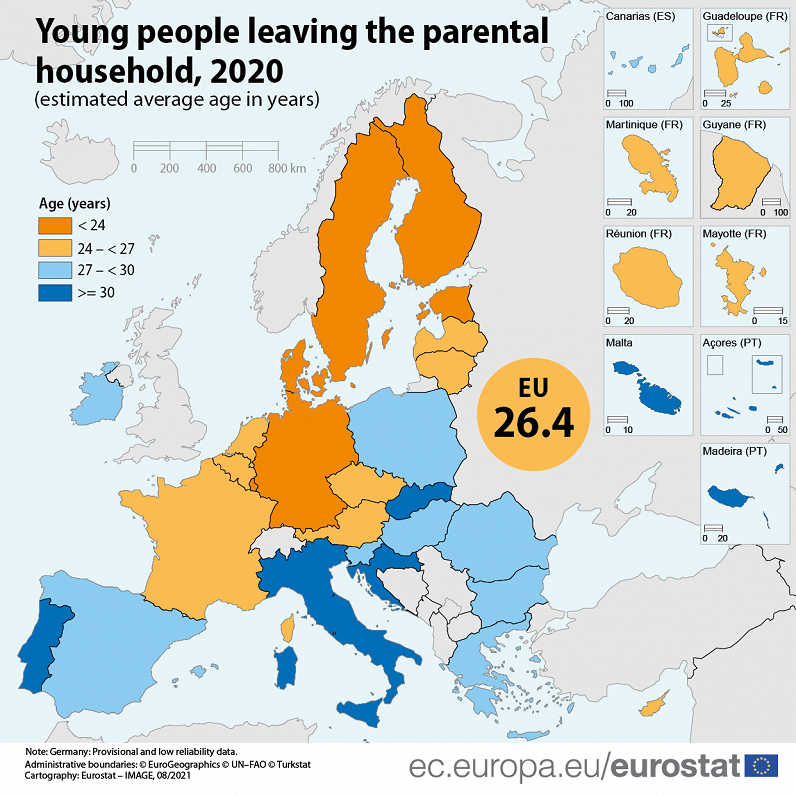The oldest average ages, all at 30 years or higher, were recorded in Croatia (32.4), Slovakia (30.9), Malta and Italy (both 30.2) and Portugal (30.0 years). By contrast, Denmark (21.2 years), Luxembourg (19.8) and Sweden (17.5) recorded the lowest average ages, all under 22 years old.
Young Latvians strike out on their own at almost the same level as the EU average: 26.7 years. Women (25.3 years) leave home more than two years earlier than men (27.9 years).
Lithuania's average age for leaving home was 25.6 years and Estonia's was much lower at 22.1 years.

In most northern and western countries, young people left the parental home on average in their early to mid-twenties, while in southern and eastern countries the average age was in the late twenties or early thirties.
In the EU, on average, males left the parental household at the age of 27.4 years, and females at 25.4 years. This trend was observed in all countries, i.e. young women moved out of the parental household on average earlier than young men. The only slight exception was Sweden where females left on average 0.1 years after males.
The widest gender gaps were found in Romania, where young males left at 30.0, and females at 25.5 years (4.5 years gender gap), followed by Bulgaria (4.2 gender gap) with males moving out at 32.0, and females at 27.8 years. In Croatia, both young men and women moved out the latest in the EU (at the age of 34.0 and 30.9 years, respectively), representing the third widest gender gap of 3.1 years.
Sweden, Luxembourg and Estonia recorded the smallest gender gaps with 0.1, 0.4 and 0.5 years difference respectively between young males and females leaving the parental home.
The gender gap was more pronounced in countries where young people left the parental home later and less pronounced in countries where they left earlier.



























